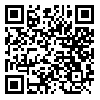Volume 4, Issue 2 (9-2017)
NBR 2017, 4(2): 173-180 |
Back to browse issues page
Download citation:
BibTeX | RIS | EndNote | Medlars | ProCite | Reference Manager | RefWorks
Send citation to:



BibTeX | RIS | EndNote | Medlars | ProCite | Reference Manager | RefWorks
Send citation to:
Norouzi1 R, Babalar M, Mirmasoumi3 M. Investigation of hairy root induction in some Salvia L. species . NBR 2017; 4 (2) :173-180
URL: http://nbr.khu.ac.ir/article-1-2951-en.html
URL: http://nbr.khu.ac.ir/article-1-2951-en.html
University of Mohaghegh Ardabili
Abstract: (10986 Views)
Hairy root induction in plants is the result of the insertion of T-DNA from Agrobacterium rhizogenes into the plant genome. The present study was conducted to investigate the effect of bacterium strain and plant species type on hairy root induction in two endemic (Salvia eremophila and S. reuterana) and five non-endemic (S. macrosiphon, S. multicaulis, S. nemorosa, S. verticellata and S. virigata) Salvia by four bacteria strains including 1724, 2659, ATCC-15834 and A4. Petiole and stem explants were not capable of inducing hairy roots, while almost all leaf segments produced it. Confirmatory studies were carried out by direct detection of inserted rol C by the PCR. The results showed that different Agrobacterium rhizogenes strain and Salvia spices had significant effect on hairy roots number and frequency. The infection of S. macrosiphon via A. rhizogenes strain ATCC15834 showed the highest number of infe-cted roots per explant (5.12 hairy roots) and root frequency (82%). The highest number of hairy root per explant in S. eremophila (3.32 hairy roots) and S. reuterana (3.92 hairy roots) were achieved by inoculation with strain A4. Strain 2659 produced the highest hairy roots number in S. nemorosa (2.6 hairy roots), S. multicaulis (4.36 hairy roots) and S. verticillata (5 hairy roots). Also hairy roots formation occurred at the highest number in S. virigata (3 hairy roots) with infection by strain ATCC15834.
Type of Study: Original Article |
Subject:
Plant Biology
Received: 2017/09/18 | Revised: 2017/09/20 | Accepted: 2017/09/18 | Published: 2017/09/18 | ePublished: 2017/09/18
Received: 2017/09/18 | Revised: 2017/09/20 | Accepted: 2017/09/18 | Published: 2017/09/18 | ePublished: 2017/09/18
| Rights and permissions | |
 |
This work is licensed under a Creative Commons Attribution-NonCommercial 4.0 International License. |







